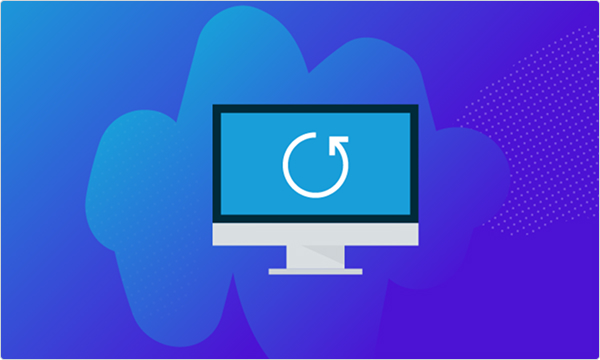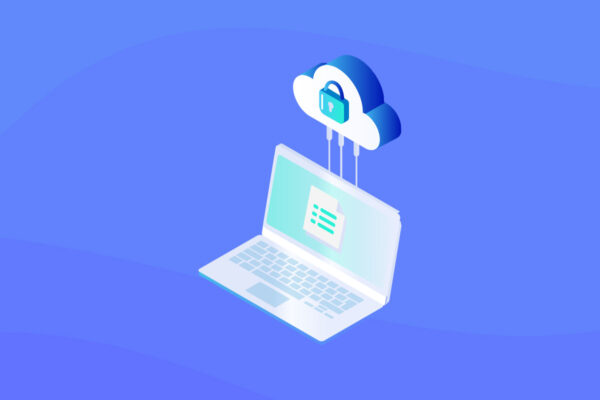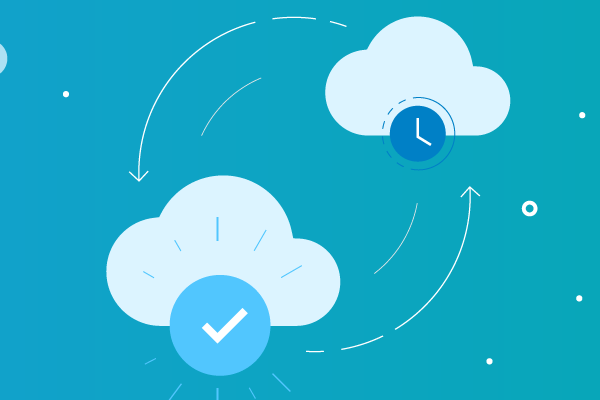Disaster recovery SLA: Key components & improving efficiency with integrated BCDR
A disaster recovery service level agreement (SLA) is a critical baseline for how MSPs and their clients manage recovery after an unexpected outage. It defines the scope, timing and expectations for restoring systems, applications and data, ensuring both parties are aligned when every second counts.
Disaster recovery SLAs set clear performance and response metrics for navigating disruptions caused by cyberattacks, hardware failures or natural disasters. For MSPs, a well-structured disaster recovery SLA is more than a contractual formality; it’s a strategic tool that reinforces operational accountability and client trust.
In this article, we’ll explore what disaster recovery SLA is, why it matters, the key components MSPs should focus on. We’ll also show how integrated business continuity and disaster recovery (BCDR) solutions, like Datto’s, can improve SLA performance through smarter workflows and stronger tech stack alignment.
What is a disaster recovery SLA?
A disaster recovery SLA is a formal agreement between an MSP and its client that defines the expectations for recovering IT systems, data and infrastructure after an outage or disruptive event. It outlines recovery time objectives (RTOs), recovery point objectives (RPOs), performance benchmarks and the roles and responsibilities of each party involved in the recovery process.
At its core, a disaster recovery SLA answers two critical questions: how quickly can services be restored, and how much data can be recovered without loss? The SLA sets clear parameters for these outcomes, ensuring both sides understand what is guaranteed during downtime scenarios. Depending on the nature of the business and its risk tolerance, these agreements can vary in complexity — from basic uptime commitments to detailed, tiered recovery plans aligned with specific applications, data types or business units.
For MSPs, SLAs are not just legal documents but operational blueprints that guide response efforts, dictate resource allocation and measure service performance over time. By clearly defining recovery expectations, disaster recovery SLAs reduce confusion during critical incidents, ensure teams act quickly and efficiently, and provide clients with confidence that their business continuity needs are being met.
Why are disaster recovery SLAs needed?
Disaster recovery SLAs are essential for bringing structure, consistency and measurable performance to high-stakes recovery scenarios. Here’s why they matter:
- Defined accountability: SLAs ensure both the provider and client understand their responsibilities, timelines and escalation paths. This clarity helps prevent delays in decision-making during disaster recovery planning and actual recovery.
- Consistent service delivery: By specifying RTOs, RPOs and communication protocols, SLAs help standardize recovery actions across different clients and scenarios.
- Client trust and transparency: A documented SLA shows clients that recovery expectations are not left to chance. It strengthens relationships by setting clear, realistic guarantees.
- Regulatory alignment: In industries with strict compliance requirements, SLAs serve as documented proof that recovery processes meet legal and industry standards.
- Operational benchmarking: SLAs enable MSPs to measure performance, identify gaps and continuously improve recovery operations based on real metrics.
A well-defined disaster recovery SLA transforms recovery from a reactive process into a managed, repeatable service. It supports business continuity and reinforces the MSP’s role as a strategic partner — not just a vendor.
Key components of a disaster recovery SLA
A strong disaster recovery SLA is a strategic framework that outlines how recovery should be handled when operations are disrupted. It defines recovery objectives, service scope, accountability, performance expectations and validation procedures. Each component is designed to remove ambiguity and ensure both MSPs and clients are aligned on what to expect when every second matters.
Agreement purpose and overview
At the heart of every SLA is a clearly defined purpose. This section sets the foundation by stating why the agreement exists and what it aims to deliver. It frames the scope of the disaster recovery services and aligns all stakeholders on recovery expectations from the outset.
By defining the objective upfront, the SLA becomes a reference point for decision-making during a disruption. It helps establish measurable targets for uptime, data protection and continuity, ensuring both the MSP and client understand the level of service committed.
This section should:
- Specify the RTOs: The maximum amount of time allowed to restore systems and resume operations after an outage.
- Define the RPOs: The maximum acceptable amount of data loss in the event of an incident. This is measured from the last backup to the moment of disruption.
Want to learn more about RTO and RPO? Read our detailed blog on RTO and RPO, and why they matter.
Also, you need to include tiered recovery objectives based on system or application criticality so that mission-critical services are restored faster than lower-priority systems.
Scope of disaster recovery services
This section defines exactly what the disaster recovery SLA covers. Without clearly outlined boundaries, assumptions can lead to gaps in protection or unmet expectations during a real incident. A well-defined scope ensures both the MSP and the client are aligned on which services, systems and environments are protected, and under what conditions recovery will be executed.
It should:
- List the systems, applications and data included in the SLA’s recovery coverage. This might include specific servers, cloud platforms, endpoints or databases critical to business continuity.
- Detail backup frequency and retention schedules, clarifying how often data is backed up, how long it is retained and whether recovery is supported across on-premises, virtual or cloud environments.
- Identify limitations and exclusions — such as third-party application failures, unsupported legacy systems or uncontrollable force majeure events — to ensure clarity on what falls outside the provider’s responsibility.
Setting these boundaries upfront helps prevent disputes during high-pressure recovery situations and provides clients with a transparent understanding of what’s protected and how.
Roles and responsibilities
A disaster recovery SLA must clearly define who does what before, during and after a disruptive event. Without this clarity, even a well-planned recovery strategy can stall due to miscommunication or missed actions.
Key responsibilities include:
- Provider responsibilities
- Performing regular and verified backups.
- Monitoring infrastructure and backup health.
- Conducting scheduled recovery tests.
- Maintaining the systems and technologies that support recovery.
- Client responsibilities
- Providing access to necessary systems, applications and data.
- Promptly reporting incidents, outages or anomalies.
- Maintaining system configurations and ensuring their compatibility with backup and recovery tools.
This dual accountability helps streamline response workflows and ensures both parties are prepared to act quickly and effectively when recovery is needed.
Performance and availability standards
This section of the SLA sets the measurable performance targets that define service quality during and after a disaster. These standards provide MSPs and clients with benchmarks for evaluating whether the SLA is being met and where improvements may be needed.
It should include:
- Defined uptime and system accessibility targets — such as 99.9% availability — to ensure critical systems remain operational even during disruptions.
- Recovery windows and performance expectations, including how quickly backups are restored, how soon systems become accessible and what performance thresholds must be met during and after restoration.
These metrics serve as the foundation for SLA compliance monitoring and help MSPs maintain consistent, high-quality service delivery across clients.
Metrics, monitoring and reporting
This section of the SLA outlines how disaster recovery performance is tracked, measured and communicated over time. It ensures that both the provider and the client have a clear, ongoing view of how recovery services are performing, even well beyond the immediate aftermath of an incident.
Specifically, this section should:
- Define key performance indicators (KPIs) that reflect service quality, such as uptime percentage, failover time, backup success rate and the number of successful restore points.
- Describe the monitoring systems used, including automated alerts, logs and dashboards, which track backup health, restore activity and system availability in real time.
- Outline reporting frequency and standards, such as monthly or quarterly performance summaries, and the format used for sharing results with clients during SLA reviews.
Testing, validation and improvement processes
This section defines how recovery systems are tested and verified to ensure SLA commitments can be met during a real incident. Regular testing confirms that backups are restorable and systems can be brought online within agreed recovery windows.
It should include:
- Testing frequency and methods used to simulate disaster scenarios and confirm system recoverability.
- Validation steps to ensure backups meet RTO and RPO objectives.
- Procedures for addressing gaps, SLA breaches or areas identified for ongoing improvement.
These activities ensure the SLA remains functional, accurate and aligned with evolving business requirements.
Remedies and service credits
This section defines what happens if SLA terms aren’t met. It ensures accountability by outlining the consequences of missed recovery targets or performance failures.
It should:
- Specify available remedies or service credits the client may receive if the provider fails to meet agreed RTOs, RPOs or uptime targets.
- Outline escalation paths and timelines for reporting SLA breaches, along with the corrective actions required to resolve performance issues.
By formalizing these terms, both parties have a clear process for managing service failures and restoring confidence.
Security, compliance and legal terms
This section outlines the legal and regulatory framework governing the SLA, ensuring the provider’s recovery processes meet required standards and protect client data throughout the recovery lifecycle.
It should:
- Detail the provider’s security practices, including data encryption, access controls and secure data handling throughout backup and recovery workflows.
- Confirm compliance with applicable regulations such as the General Data Protection Regulation (GDPR), the Health Insurance Portability and Accountability Act (HIPAA) and System and Organization Controls 2 (SOC 2), depending on the client’s industry and data types.
- Define legal terms, including termination clauses, acceptable use policies and adherence requirements tied to legislation and industry best practices.
How BCDR solutions support SLAs for disaster recovery
Modern business continuity and disaster recovery solutions are purpose-built to help MSPs deliver on their disaster recovery SLAs. By automating complex workflows, reducing human error and improving system visibility, BCDR platforms support fast, reliable recovery that aligns with SLA performance targets. From backup integrity to failover execution, these tools simplify and strengthen every phase of the backup and recovery lifecycle.
Automated backup and recovery processes
Automation plays a central role in helping MSPs meet strict RTO and RPO targets. With automated backup scheduling, data synchronization and recovery orchestration, BCDR platforms eliminate the inconsistencies and delays caused by manual intervention.
Key benefits include:
- Consistent backup frequency and timing.
- Faster recovery through predefined workflows.
- Scalable protection as environments grow.
Automation ensures that recovery steps are executed quickly and accurately, keeping SLA metrics on track even under pressure.
Immutable backups with verification
Immutable backups cannot be altered or corrupted, which protects critical data from ransomware and other threats. When combined with automated verification, these backups offer a dependable foundation for recovery.
- Immutable storage ensures backup integrity.
- Verification processes confirm backups are complete and restorable.
- SLA-aligned restore points are always available.
These features reduce the risk of corrupted or unusable backups, giving MSPs confidence in meeting their recovery guarantees.
Data replication and redundancy
Data replication ensures there is always a current, accessible copy of business-critical information, even if the primary system fails. By duplicating data across multiple environments, BCDR solutions reduce the risk of permanent data loss.
- Supports aggressive RPOs by syncing data in real time or near real time.
- Provides geographic redundancy to withstand local disasters.
- Enables fast recovery from secondary or off-site locations.
This resilience is essential to meeting SLA-defined recovery targets during major disruptions.
Instant virtualization and failover
BCDR platforms with instant virtualization allow systems to be brought back online quickly using virtual machines (VMs), either locally or in the cloud. This keeps operations running even when production infrastructure is down.
- Enables near-instant failover for critical workloads.
- Reduces downtime to minutes, not hours.
- Keeps clients operational while root issues are resolved.
Instant recovery capabilities drastically reduce RTOs and ensure business continuity without delay.
Regular disaster recovery testing
Automated recovery testing verifies that all recovery procedures function as expected and that SLA goals are achievable in real-world scenarios.
- Scheduled, non-disruptive testing keeps systems prepared.
- Reports highlight test outcomes and recovery gaps.
- Demonstrates SLA compliance and builds client confidence.
Routine testing ensures MSPs can deliver consistent, reliable recovery when it matters most.
Driving greater SLA efficiency with integrated BCDR
When BCDR solutions are integrated with core IT management and security systems, MSPs can deliver faster, more accurate and SLA-aligned disaster recovery. Integrations with remote monitoring and management (RMM), professional services automation (PSA), documentation and security tools help streamline communication, automate recovery tasks and verify that every part of the SLA is being met with precision.
RMM integration: Proactive performance management
Remote monitoring and management integration allows MSPs to detect and resolve backup or recovery issues in real time. Automated alerts, health checks and remediation actions reduce the risk of downtime and help prevent SLA violations before they happen.
PSA integration: Streamlined communication and accountability
Professional services automation platforms integrate directly with BCDR systems to log recovery activities, track SLA metrics and create tickets for any incidents. Dashboards and status updates provide clear visibility across teams and help maintain consistent recovery timelines.
Documentation integration: Consistent and accurate recovery workflows
Linking BCDR systems to documentation platforms ensures that recovery procedures, system configurations and escalation steps are easy to access and always up to date. Teams can follow verified runbooks during incidents, reducing confusion and recovery delays.
Security integration: Stronger protection and recoverability
Integrating with endpoint protection and security tools allows MSPs to monitor for threats, verify the integrity of backups and protect recovery environments. This ensures restored data is free from compromise and supports compliance with security standards.
Exceed disaster recovery SLAs with Datto BCDR
Datto BCDR is purpose-built to help MSPs confidently deliver on their disaster recovery SLAs. By combining automation, virtualization, security and deep IT stack integration, Datto equips MSPs to help their clients recover faster and reduce downtime and data loss.
Whether you’re restoring a single file or an entire infrastructure, Datto’s platform ensures reliable, SLA-aligned recovery with minimal effort.




